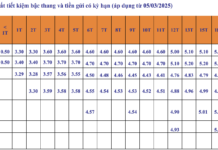
Illustrative Image
According to Reuters, India’s imports of Russian crude oil are projected to rise in November as refineries accelerate shipments ahead of the November 21 deadline. This date marks the end of the U.S. grace period for sanctions against major Russian energy firms, including Rosneft and Lukoil.
Data from Kpler reveals that India imported an average of 1.62 million barrels per day (bpd) from Russia in October, nearly unchanged from September. However, volumes are expected to increase in November, as tankers bound for India loaded an average of 1.74 million bpd at Russian ports in October, up from 1.69 million bpd the previous month.
With an average transit time of 25–30 days, most October shipments will arrive in India before the U.S. sanctions resume. Post-deadline, transactions with non-sanctioned entities may continue but at heightened risk.
Sumit Ritolia, Senior Analyst for Refining and Modeling at Kpler, commented:
“We observe a significant surge in Russian crude shipments to India ahead of November 21, driven primarily by advanced scheduling and reduced vessel turnaround times.”
While India’s imports rise, Russia’s oil exports to China plummeted nearly 30% in October to 1 million bpd, signaling weakening demand from Asia’s largest market. Turkey also saw an 8% decline to 349,000 bpd.
Notably, U.S. crude shipments to India tripled in October, reaching 568,000 bpd, up from 207,000 bpd in September. This surge positions the U.S. as India’s fourth-largest supplier, following Russia (1.62 million bpd), Iraq (826,000 bpd), and Saudi Arabia (669,000 bpd).
The sharp increase in U.S. supplies largely offsets reduced volumes from the UAE, which fell to 363,000 bpd from 581,000 bpd in September. Ritolia notes that this shift is economically driven rather than sanctions-related.
“With a 45–55-day transit, the U.S. supply surge reflects pricing advantages. The widening Brent–WTI spread, coupled with weak Chinese demand, has made WTI Midland more competitive for Indian deliveries,” he added.
This strategic maneuvering highlights Indian refiners’ efforts to maximize the pre-sanction window while adapting supply sources to maintain cost efficiency amid global energy market volatility.
Source: Reuters
China Lifts Rare Earth Export Ban for BRICS Nation, Imposes Strict Condition: No Resale to the US After 870-Ton Deal in 2024
Shipments are subject to strict conditions: no re-export to the United States and no use for military purposes.










































